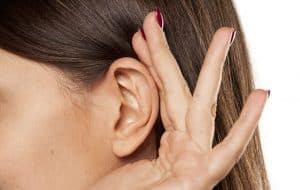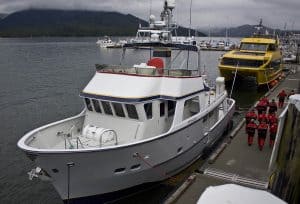
Silence at your fingertips: an acoustic breakthrough
It’s humbling to change our stance about soundproofing products, but this new foam recently patented by a local inventor promises to render the dream of

It’s humbling to change our stance about soundproofing products, but this new foam recently patented by a local inventor promises to render the dream of

Confessions of a silence-seeking, music-loving blogger Just about anyone who’s spent any significant length of time honing a particular skill might concur that one of

How to get there from where you are In the process of planning a recent temporary escape from the noise of construction and sirens that

I’d never before pondered that fish and noise might—even indirectly—have anything to do with each other. Little did I know! Sure, fish do tend to be quiet, but the process of harvesting them most assuredly does not.
With high casualty, accident, and injury rates, fish harvesting ranks as one of the world’s most dangerous industries. Occupational Health and Safety (OH&S) and Workers’ Compensation Board (WCB) literature from coastal communities not only confirms this; it also highlights noise-induced hearing loss (NIHL) as a primary health hazard among fish harvesters. What these regulatory bodies haven’t addressed is the noise-induced fatigue caused by insufficiently sound-attenuated crew quarters. Cumulative health effects of noise exposure over time also include cardiovascular stress, which can lead to high blood pressure and dizziness.

Whether you’re a parent, a teacher, or a student of any age, news headlines like the one above spell not only uncertainty, but an exponentially increasing likelihood that you may soon need to—if you haven’t already—set up a virtual classroom in your home.

If you’re familiar with our work and philosophy, you’ll know that we’re all about planning-stage noise mitigation measures vs/ so-called soundproofing… the latter almost worthy of MythBusters*. You’ll know BAP Acoustics gives no bandwidth to purveyors of noise-cancelling miracle materials and quick-fix solutions with no scientific basis. That said, there are ways—even in older homes—to enjoy noisy hobbies without inciting the wrath of your entire neighbourhood.

In Have you heard about her? Women’s innovative contributions to acoustics (Part I), we started off with a historical perspective, acknowledging Hedy Lamarr’s ground-breaking work in developing the frequency hopping spread spectrum, a technology still used in underwater acoustic communication and recognized as the foundation of WiFi, GPS and Bluetooth.

Although Hedy Lamarr wasn’t an acoustician per sé, the frequency hopping spread spectrum technique she developed with avant-garde composer George Antheil was a milestone invention in the field of information technology, one still used in underwater acoustic communication owing to its anti-interference and anti-fading properties. These same properties explain why the two friends are widely credited with paving the way for later, more complex inventions including WiFi, GPS and Bluetooth.

Ever wondered what acoustic engineering consultants are typically asked to do when they’re… consulted? Maybe you have an acoustics-related problem of your own but aren’t sure what questions to ask? First of all, please don’t hesitate to contact us and express your concerns, because at BAP Acoustics, we believe there are no wrong questions, especially not when they elicit sound advice. Secondly, we hear certain types of questions so frequently we feel they warrant their own blog post, so please read on. You may see your own question—or one relevant to it—addressed below.

Sure, noise can irritate even the most serene among us. But to label it an actual health hazard, like air pollution? That’s pretty hyperbolic, isn’t it? It’s only noise, after all; it’s not like it’ll kill us or something. Is it? Well, yes and no…
Oh wait, when someone deems noise to be a health hazard, they must be referring to the kind of high-decibel din found in some industrial workplaces, right? Jack hammers, chainsaws, welders… industrial machinery makes industrial noise; that’s why workers wear protective gear. Doesn’t adherence to OHS regulations ensure safety? Again, yes and no.